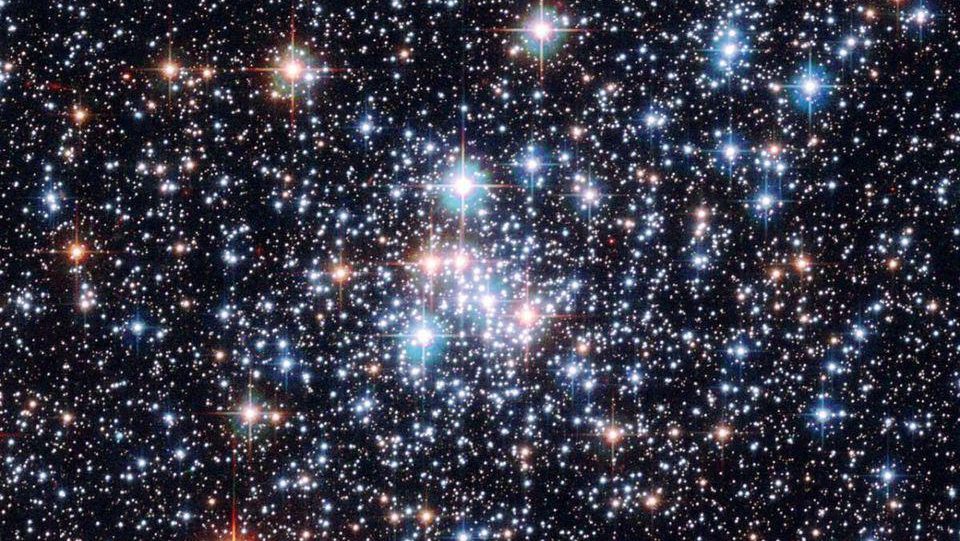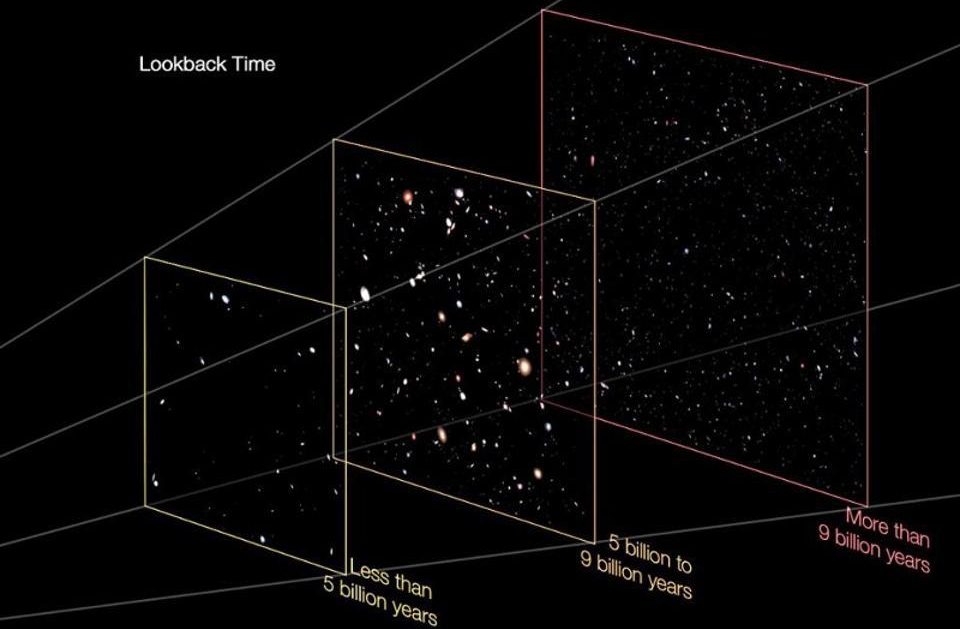How has the James Webb Space Telescope changed cosmology?

- Prior to JWST, our best observations plus our leading theories had combined to create a “consensus” picture of the Universe, showing us the broad strokes of how our cosmos grew up and gave rise to us.
- Since July of 2022, however, when JWST’s science operations began, we’ve learned an incredible amount of new information about the Universe, from star and planet formation to the earliest galaxies.
- This hasn’t led to a revolution in terms of how we conceive of the Universe, as some had hoped, but it has led to a number of important revisions in our consensus picture. Here’s what has and hasn’t changed.
It’s hard to fathom, but it’s barely been two years since the James Webb Space Telescope (JWST) began its science operations in July of 2022. Back then, we had an incredible amount of information about our Universe that we had already uncovered, as well as a great number of cosmic puzzles we were still facing with no obvious solution in sight. We knew that our Universe was:
- 13.8 billion years old,
- began with a hot Big Bang in the aftermath of an inflationary period,
- was dominated by the mysterious dark energy and dark matter, whose nature was unknown,
- with the big problem of the “Hubble tension” looming over our measurement of the expansion rate,
- where supermassive black holes were spotted to be very massive even early on,
- and where even the earliest galaxies detected were massive, somewhat evolved, and bright.
Our picture of the Universe included galactic, stellar, and chemical evolution, from a pristine early state to the late-time state that mirrors what we observe nearby. It included a history where more than two sextillion stars, locked up in trillions upon trillions of galaxies, were spread all throughout an observable Universe that spans 92 billion light-years in diameter. But many big questions still remained. What are dark matter and dark energy? How fast is our Universe actually expanding? When did the first stars and galaxies form? How did supermassive black holes arise? And how did stars like our Sun and planets like our Earth take shape and form?
Now that we’re more than two years into JWST’s science missions, here’s what’s changed, here’s what hasn’t, and here’s what new questions we’re asking in the aftermath of JWST’s findings.

We have to remember exactly what JWST is, because as remarkable as it is, it isn’t capable of answering all of our cosmic questions even with its newfound power. Sure, JWST is a large, cold observatory, with high resolution capabilities, that’s optimized to observe the Universe at long wavelengths (from 0.6 to ~28 microns), and it can perform imaging in dozens of different wavelength ranges, as well as spectroscopy on individual objects. However, JWST also has several important limitations.
- It has a narrow field-of-view, so it can’t observe very much of the Universe at once.
- It’s incredibly oversubscribed, with about ten high-quality proposals for observing rejected for every one that’s accepted.
- It takes much longer to perform spectroscopy on an object than it does to conduct imaging, severely limiting how many objects can be spectroscopically analyzed.
- And it can’t image objects in multiple filters simultaneously; the greater the number of sets of wavelengths you want to perform photometric imaging at, the longer you need to observe with JWST.
Even with these restrictions and limitations, there’s a tremendous amount of novel science that JWST is uniquely equipped to conduct. In particular, JWST was expected to break cosmic records such as the “most distant” or “earliest” example of certain classes of objects, as JWST was designed with those goals in mind. However, there were a whole suite of new discoveries that were both unexpected and suddenly possible thanks to JWST’s capabilities, and those are among the most exciting aspects of science with JWST, or any new observatory, for that matter.
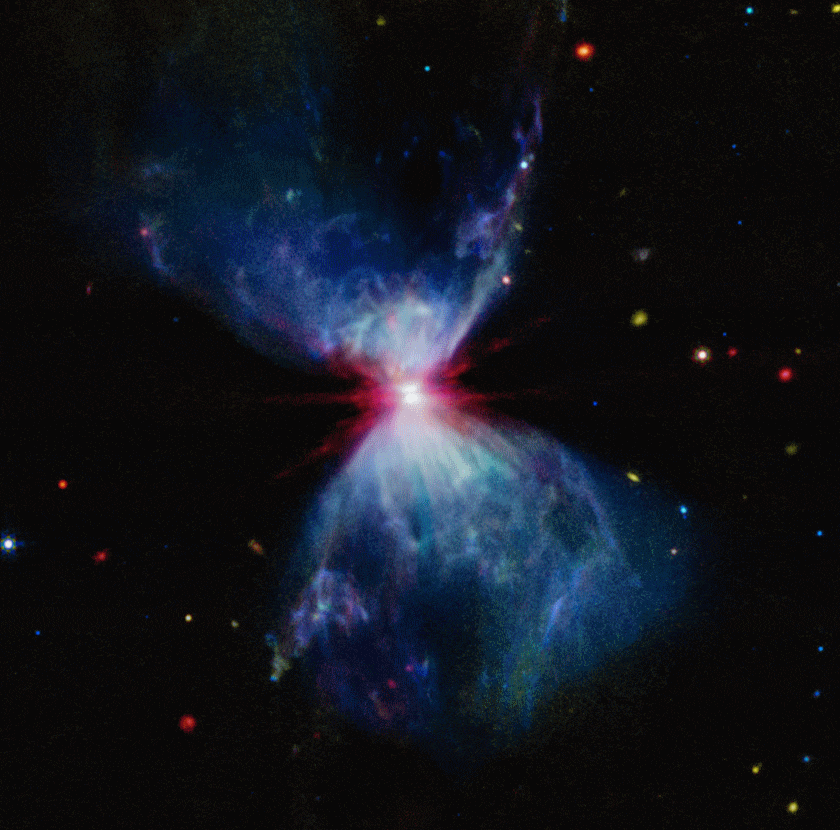
There’s a phrase that astronomers and physicists use all the time that’s virtually unheard of by people outside of those fields: “discovery potential.” There were two sets of reasons astronomers were so excited about the JWST era when it came to science. The first was what you’d expect: with all of these novel capabilities enabled by new technologies — a large primary mirror in space owing to its segmented and folding nature, extremely cold temperatures owing to a 5-layer sunshield, pristine optics and instruments owing to advances in instrumentation and clean room technology, etc. — there are a number of records that, just from its designed capabilities, JWST was certain to shatter. These were the “slam dunk” justifications for JWST.
But the second set of reasons is profound not just for JWST, but in so much of physics and astronomy in general. Whenever you build an instrument, observatory, or machine that:
- surpasses all previous limits of all similar endeavors,
- particularly over the specific range of parameters that similar endeavors were sensitive to in the past,
- and where you then use that instrument, observatory, or machine to look in new locations or even to look at objects or phenomena that you’ve looked at previously,
those new capabilities enable something that simply isn’t possible without them: the possibility of discovering something new simply by looking with this new tool. All previous endeavors wouldn’t be sensitive to such a new discovery, but simply by probing the Universe with this new tool, the possibility of finding something surprising — or even revolutionary — is suddenly within reach.
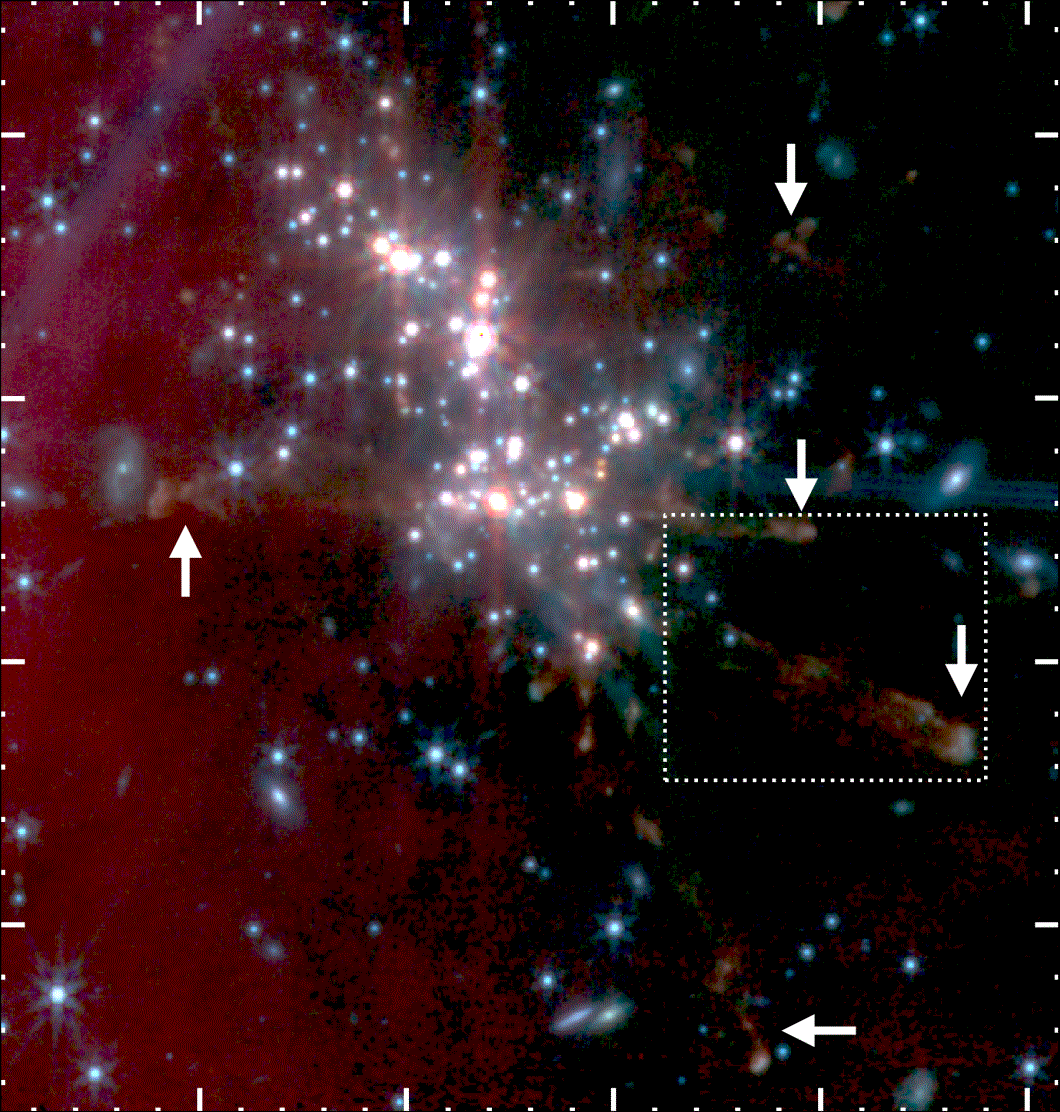
It should come as no surprise, then, to learn that JWST has brought us many new discoveries that fall into both categories. Yes, we’ve set many new cosmic records with JWST, exactly as we would have expected. With longer-wavelength and higher-resolution capabilities than Hubble, Spitzer, SOFIA, or any of the world-class ground-based optical and infrared observatories in our arsenal, ultra-distant stars, quasars, and galaxies were exactly the types of objects that JWST was designed to detect. There are many examples of cosmic distance records that have been broken and revised since the JWST era began in 2022, and they’re just as impressive as you might have imagined.
Many have called the JWST a “cosmic time machine” for its ability to see back farther into our cosmic past than any other optical or infrared observatory in history. (Yes, we can see the Big Bang’s leftover glow with microwave light, and we can potentially see the signature of neutral hydrogen atoms even before the formation of stars with far-infrared and radio astronomy thanks to the 21cm spin-flip transition of hydrogen.) Its ability to observe longer wavelengths than ever before at such high precision, plus its ability to conduct spectroscopic follow-up observations, allowed JWST to not only identify enormous numbers of candidate ultra-distant galaxies, but to confirm their distances and identify features within them.
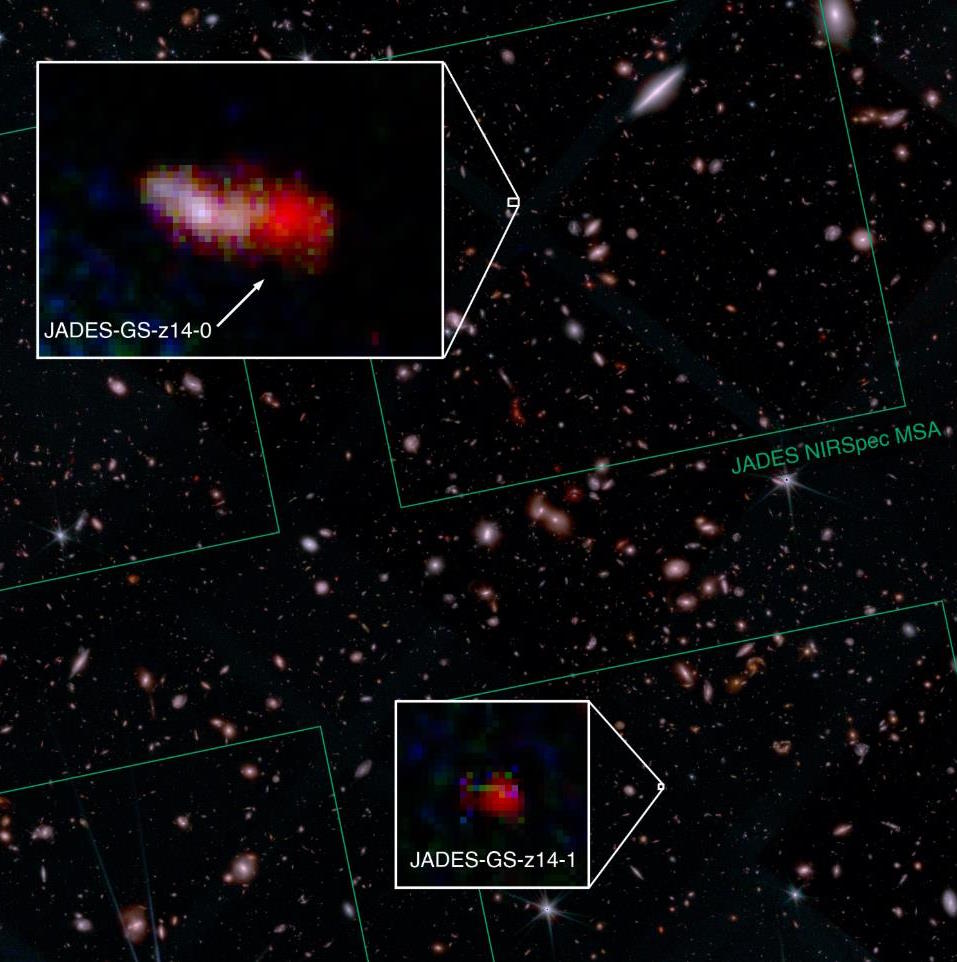
Prior to JWST, for example, the most distant galaxy in the known Universe was GN-z11, which was observed by the Hubble Space Telescope and which set the cosmic distance record back in 2016. When JWST began science operations in 2022, it was still the most distant confirmed galaxy known to humanity. As of late 2024, however, not only is GN-z11 no longer the record-holder, but it isn’t even in the top 10. All ten of the most distant galaxies were discovered or had key features detected by JWST that confirmed their great distance, with the JADES collaboration spotting and confirming the current cosmic record-holder: JADES-GS-z14-0.
This ultra-distant galaxy is truly remarkable in a number of ways.
- Its light comes to us from just 285 million years after the Big Bang, when the Universe was 2.1% of its current age.
- It overlaps with a brighter foreground galaxy, but thanks to JWST’s incredible resolution, we can disentangle the two galaxies, revealing the more distant background object in detail.
- It has a redshift of 14.32, meaning that the light we’re observing has been stretched by an additional 1432% of its originally emitted wavelength by the time JWST observes it.
However, there are arguably two properties of this galaxy that came as a glorious set of surprises. First off, this galaxy was bright: not only brighter than our leading theories would predict, but substantially brighter than even previously-observed ultra-distant JWST galaxies. And second off, there’s extremely little dust in this galaxy: again something that defies predictions.
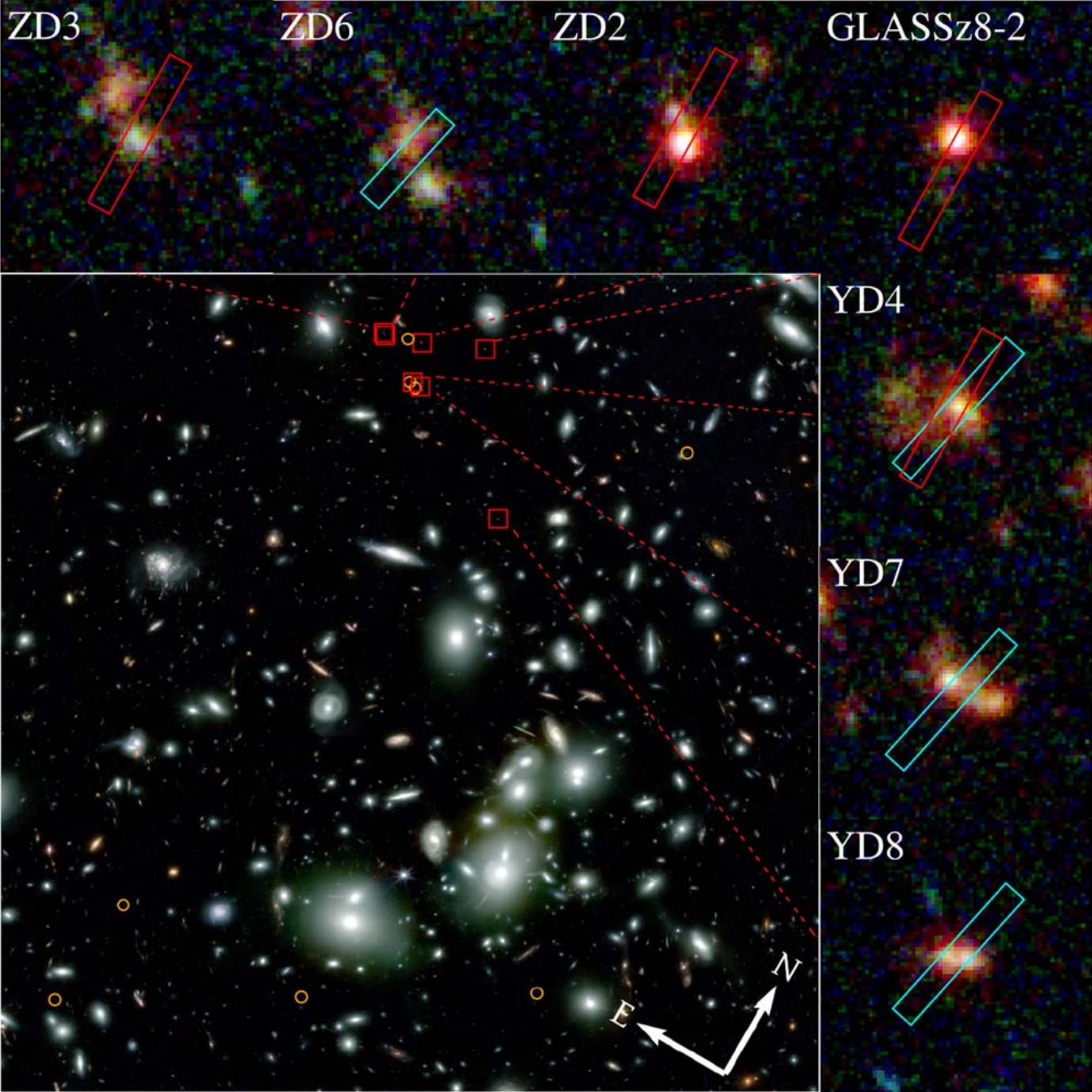
JWST has also broken many other cosmic distance records. It discovered the earliest proto-cluster of galaxies ever seen, by finding seven independent galaxies in the same narrowly-confined region of the sky that are all at the precise same redshift: 7.88, corresponding to an epoch just 650 million years after the Big Bang. This proto-cluster of galaxies, known as A2744z7p9OD, broke the old record by an impressive 150 million years. Moreover, instead of just appearing as single, red dots that were indistinguishable from individual point-like sources, many of these early galaxies appear to be extended objects, and some may even exhibit signatures of having satellite companions: rich details that would have been impossible to observe without JWST’s capabilities.
Hundreds of ultra-distant galaxy candidates — including dozens that may yet break JWST’s newly set records — have also been found in this early JWST data. The most distant gravitational lens ever discovered was found with JWST by pure serendipity in a 2023 study. Many of the most distant supermassive black holes of all time (including the four most distant of all) have been found thanks to JWST as well, including a remarkable one in the galaxy UHZ1: where JWST (in infrared light) and Chandra (in X-ray light) teamed up to find a supermassive black hole of approximately double the mass of the one at the Milky Way’s center, but where only about ~10 million solar masses worth of stars are found in that galaxy. Although it’s no surprise that JWST could reveal these objects, the mass ratios between the black hole and the total number of stars in galaxies such as this were wildly unexpected.
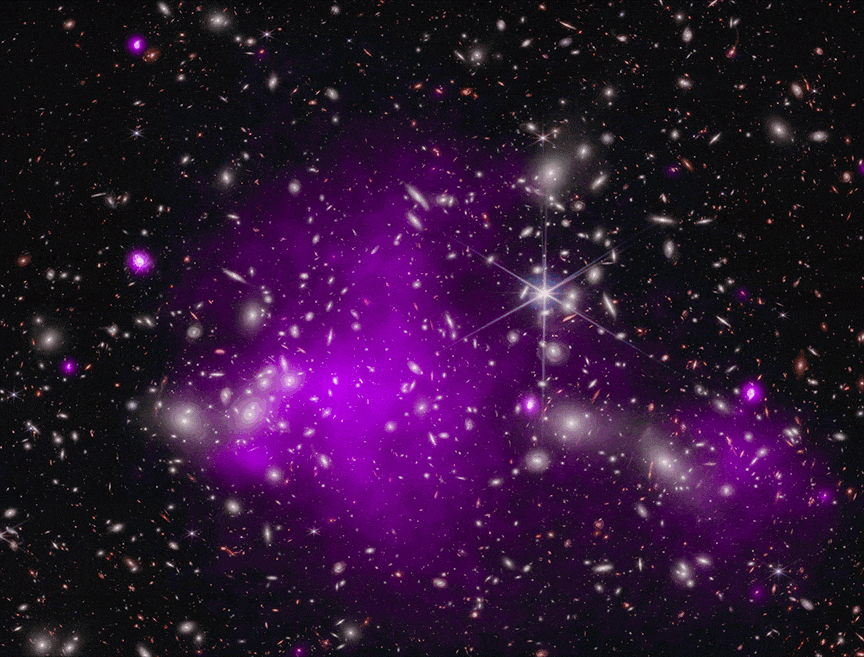
JWST also conducted what many would call “mundane” observations: following up on objects that have captivated astronomers for generations and that have been observed hundreds of times before. JWST looked at the Crab Nebula, for example: a supernova remnant that was born with the core-collapse of a massive star nearly a thousand years ago, back in 1054. In the 970 years since, the Crab Nebula has expanded and grown to be some 11 light-years across, showcasing the power of a supernova explosion even a millennium later. With its sensitivity to features very difficult to resolve with prior observatories, it may yet resolve the mass mystery: why the central pulsar plus the material in the supernova ejecta doesn’t add up to the minimum mass (of 8 solar masses) thought necessary to trigger a core-collapse supernova.
It peered inside the Orion Nebula, which is the closest large star-forming region to Earth. Inside, it sought to better image protostars along with mapping out the neutral matter and dust inside of it. Sure, it succeeded in those endeavors, but it also found something that was wholly unexpected with its infrared-sensitive capabilities: an enormous number of Jupiter-mass (and super-Jupiter mass) planets that were freely floating inside these star-forming regions, planets without parent stars of any type. Not only was the discovery of these planets a surprise, but a whopping 9% of them were found being bound together in binary pairs, making them Jupiter-Mass Binary Objects (JuMBOs), a class of object not even known to exist prior to JWST.

When JWST peered inside the well-studied El Gordo galaxy cluster, it found some spectacularly-shaped gravitational lenses, which is precisely what you’d expect to find in a large, massive, but distant galaxy cluster whose gravity can curve and distort the spacetime it occupies. As a result, background objects are lensed: distorted, stretched, and magnified, often appearing as multiple images at once. Also found in that field, however, was something never seen before: a single red supergiant star located at cosmological distances, only visible to JWST because of the combination of its capabilities along with the lensing properties of the El Gordo galaxy cluster. Known as Quyllur, the Quechua term for star, it’s located more than 10 billion light-years away.
Meanwhile, JWST also observed a large number of relatively nearby galaxies that had three important properties:
- they were rich in Cepheid variable stars, which is a special type of star that varies in brightness over time with a well-known relationship,
- they were found in galaxies that also housed, at one point, at least one type Ia supernova, making them important “connecting rungs” in the cosmic distance ladder method of measuring the expansion rate of the Universe,
- and they were far enough away that pre-existing observatories, such as Hubble, couldn’t resolve Cepheids very well on an individual basis in these crowded star fields.
Was this field-crowding issue biasing our cosmic distance ladder? JWST was capable of asking-and-answering that question, and the answer is a resounding “no,” demonstrating that the Hubble tension and the mystery over the expanding Universe is just as strong as ever, all while greatly reducing any possible sources of error.
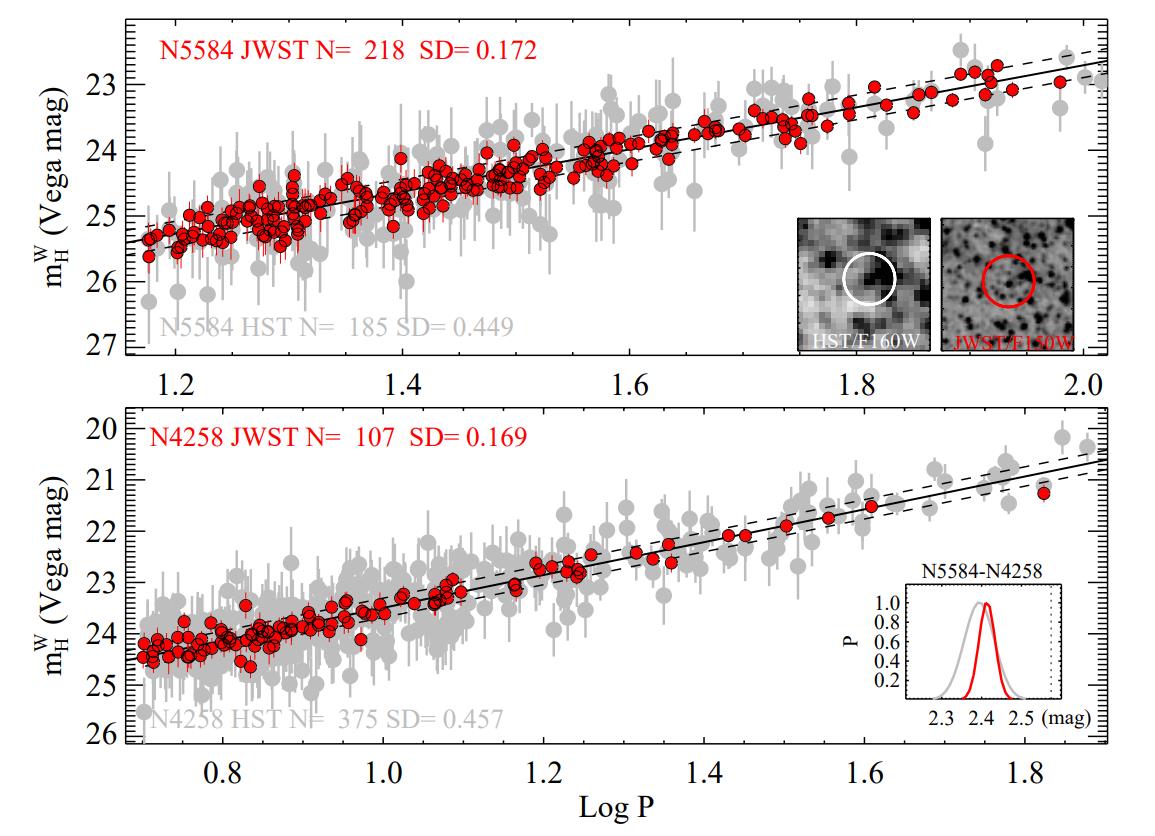
Perhaps the single most surprising JWST discovery, however, came from looking at the bright, nearby star Fomalhaut: one of the top 20 brightest stars in the night sky, and one that’s located only ~25 light-years away. It’s also a very young stellar system: so young that it still has a dust-rich debris disk surrounding it: something that hasn’t been true of our own Solar System in nearly four billion years. There were hints that there might be an exoplanet in this system, and JWST time was allocated to a team that wanted to search for it. With its high resolution capabilities and sensitivity to long-wavelength infrared light, there was a chance that JWST could have directly imaged such a world.
The story that the observations wound up telling was a completely unexpected one, however. Seeking a potential planet, JWST instead found:
- an inner disk, corresponding to the inner planets and an asteroid-like belt,
- an outer ring, previously seen by Hubble and ALMA, corresponding to a Kuiper-like belt,
- an inner gap and an outer gap in these features, corresponding to the location of likely (although invisible to JWST’s eyes) exoplanets,
- and the real shocker: an intermediate belt, something with no analogue in our own Solar System.
This shocking and surprising discovery is now leading us to ask a question we didn’t even know we needed to ask: how many “belts” does a typical stellar system actually have? Is two, the number that we possess, common or uncommon, or even a cosmic rarity?

From a cosmic perspective, JWST has shown us many things we could have expected, but has delivered a tremendous number of surprises as well. It’s broken the cosmic distance records in many regards: for most distant galaxy, most distant galaxy cluster, most distant red supergiant, most distant gravitational lens, and most distant supermassive black hole, among several others. But what it’s taught us about the Universe — and in particular, about how our cosmos grew up — have included surprises that no one could have anticipated prior to JWST unleashing the power of its discovery potential onto humanity.
- Do stellar systems, like our own Solar System, have two belts, three belts, or some other number of belts in general, and which configuration is most common? (We didn’t know to ask this question before JWST.)
- What types of non-stellar systems are birthed when stars form, and are super-Jupiter planets and systems with Jupiter-mass binary objects in them just the tip of the iceberg? (We didn’t know that JuMBOs existed prior to JWST.)
- How do supermassive black holes truly form in the Universe, and do these JWST findings rule out the possibility that they arose from the first generations of stars? (The answer seems to be “yes,” incredibly!)
- Now that field-crowding of Cepheids has been ruled out as the cause of the Hubble tension, what is its ultimate resolution? (Still an open question, but one potential contaminant has been eliminated.)
- And, despite their initially surprising abundances and brightnesses, are the earliest galaxies seen by JWST truly consistent with our consensus picture of the Universe? (The answer again appears to be “yes,” as those properties of galaxies are mostly attributable to bursty star formation and the enhancement of light from supermassive black hole activity.)
JWST has taught us an incredible amount of information about the Universe already, including what it’s like, how it grew up, and how it created stellar and planetary systems both different to as well as similar to our own. With another ~20 years of science operations to look forward to, the only thing we can be certain of is that the records JWST has set, as well as the science questions it’s raised and begun to answer, are a harbinger of a great many discoveries still to come.

